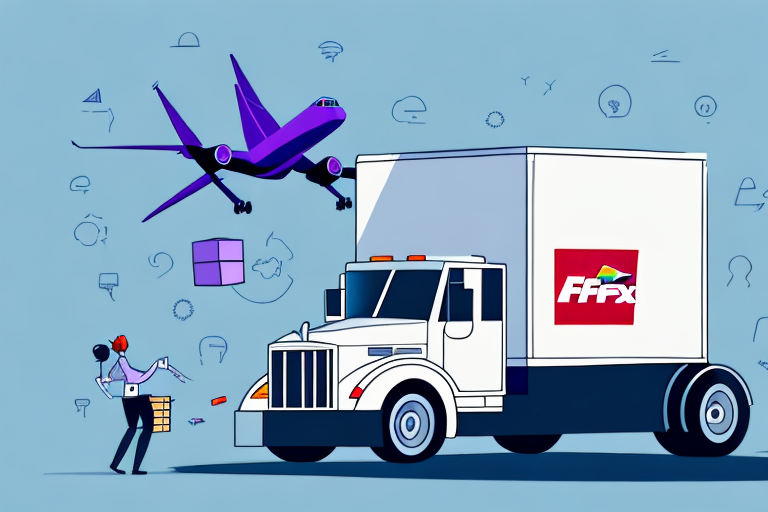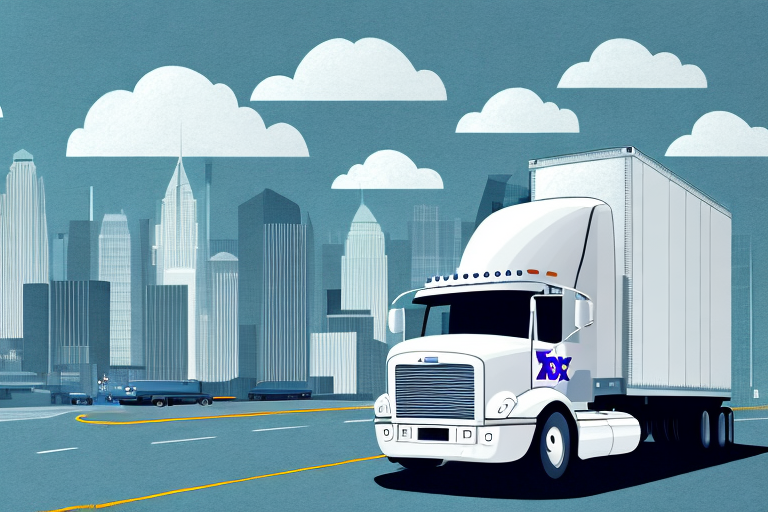Understanding FedEx Delivery Challenges
FedEx is one of the world’s leading logistics companies, providing delivery and shipping services to millions of customers every day. However, as with any large-scale operation, issues can arise that lead to delays or other problems in the delivery process. In this article, we will take a closer look at the causes of FedEx delivery issues and explore potential solutions to help customers receive their packages on time and in good condition.
The Impact of Global Events on FedEx Deliveries
COVID-19 Pandemic Effects
The COVID-19 pandemic has had a significant impact on all aspects of daily life, and the delivery industry has not been immune to its effects. With a surge in online shopping and home delivery options, FedEx had to adjust its operations to meet increased demand while ensuring employee safety. This adjustment led to delays in delivery times and increased pressure on the company’s delivery infrastructure. According to a Statista report, global e-commerce sales grew by 27.6% in 2020, significantly increasing the volume of packages FedEx needed to handle.
Supply Chain Disruptions
One of the biggest challenges FedEx faced during the pandemic was the disruption to global supply chains. Lockdowns and travel restrictions made the movement of goods across borders more difficult, leading to delays in international package deliveries and increased operational costs.
Common Causes of FedEx Delivery Delays
Incorrect or Insufficient Addressing
Packages labeled incorrectly or without complete information can get lost or delayed in the system, causing frustration for both customers and FedEx employees. Ensuring accurate addressing is crucial for timely deliveries.
Unexpected Events and Circumstances
Extreme weather conditions, accidents, or other disruptions to the transportation network can cause delays. For instance, severe storms or natural disasters can impede transportation routes, leading to longer delivery times.
High Package Volumes During Peak Seasons
FedEx and other shipping companies often experience a surge in package volume during holidays or major sales events, which can overload processing facilities and slow down deliveries. The holiday season typically sees a 30-40% increase in package volume, necessitating additional staffing and resources.
Technological Advancements and Their Role in Delivery Efficiency
Automated Sorting Systems
FedEx utilizes automated sorting systems to quickly and accurately sort packages based on their destination, reducing the likelihood of errors and delays. These systems enhance processing speed and reliability, contributing to overall delivery efficiency.
Real-Time Tracking and Mobile Scanning Devices
The implementation of mobile scanning devices allows FedEx drivers to track packages and update delivery information in real-time. This technology provides customers with up-to-date tracking information and helps minimize delivery errors.
According to a Forbes article, the integration of AI and machine learning in logistics is expected to improve delivery accuracy and speed significantly.
Environmental and Weather-Related Delivery Challenges
Impact of Weather Conditions
Weather conditions such as extreme temperatures, high winds, and heavy rain or snow can create delays and potential damage to packages. FedEx employs procedures like using insulated packaging and diverting packages to alternative routes to mitigate these effects. However, severe weather events can still result in significant delays.
Sustainability and Route Optimization
Efficient route planning not only ensures timely deliveries but also reduces the environmental impact of delivery operations. FedEx uses advanced algorithms to optimize delivery routes, minimizing fuel consumption and lowering carbon emissions. This aligns with FedEx’s commitment to sustainability and reducing its carbon footprint.
Managing Customer Expectations and Communication
Accurate Tracking and Delivery Estimates
FedEx strives to manage customer expectations by providing accurate tracking information and reliable delivery estimates. Transparent communication helps customers stay informed about the status of their packages and any potential delays.
Addressing Delivery Issues
When delivery issues occur, such as delays or lost packages, FedEx’s dedicated customer service team assists customers in resolving problems and ensuring satisfaction. Providing compensation for missed deliveries or damaged items is part of FedEx’s effort to maintain customer trust.
Human Error and Quality Assurance in Deliveries
Minimizing Human Error
Despite technological advancements, human error can still lead to mislabeled packages or missed deliveries. FedEx invests in extensive training and support for its employees to minimize these errors and maintain high-quality service standards.
Checks and Balances
FedEx employs a system of checks and balances, where multiple employees are involved in the delivery process to ensure accuracy and accountability. Real-time monitoring systems also help identify and address potential issues promptly.
Future Trends and Solutions for FedEx Deliveries
Innovative Delivery Technologies
FedEx is exploring advanced technologies such as drones and autonomous vehicles to enhance last-mile delivery efficiency. Drones can bypass traffic congestion, reducing delivery times, while autonomous vehicles offer the potential for 24/7 delivery operations.
Artificial Intelligence and Machine Learning
AI and machine learning are being integrated into FedEx’s operations to better predict delivery times and optimize routes. These technologies enable more accurate forecasting and resource allocation, improving overall delivery performance.
Sustainability Initiatives
FedEx is committed to reducing its environmental impact by investing in electric and hybrid vehicles, as well as exploring alternative fuels like biofuels and hydrogen. These initiatives aim to lower the company’s carbon footprint and promote sustainable delivery practices.
Case Studies: Resolving FedEx Delivery Issues
Real-Life Examples
Examining specific instances of FedEx delivery issues and their resolutions provides valuable insights into the complexities of the delivery process. For example, during the holiday season, FedEx implemented additional staffing and optimized sorting facilities to handle the surge in package volumes, successfully reducing delivery delays.
Another case involved severe weather disruptions where FedEx rerouted packages through alternative pathways and utilized insulated packaging to prevent damage, ensuring customer satisfaction despite challenging conditions.
Conclusion
While FedEx delivery issues can be frustrating, they are often the result of factors beyond the company’s control, such as global events and extreme weather. By investing in technology, optimizing its delivery network, and providing quality customer service, FedEx works to ensure timely and efficient package delivery to its customers around the world. Continuous innovation and a commitment to sustainability further position FedEx to address future challenges and meet evolving customer needs.




















